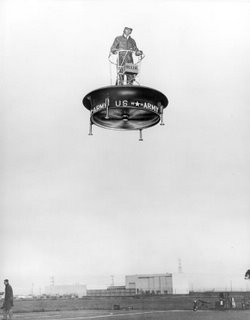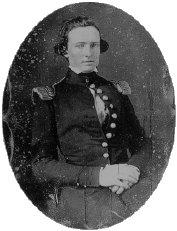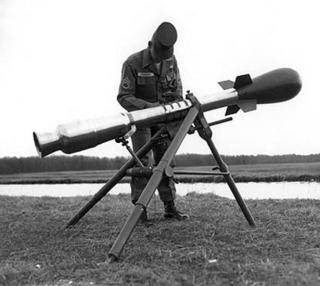
This is coolbert:
Most people are familiar with the routine effects of a nuclear detonation. Localized radiation, heat, and blast effect from the explosion of an atomic weapon. As was witnessed as Hiroshima or Nagasaki. This type of damage is well known to the lay public.
Less known is the effect of
electro-magnetic-pulse [EMP] that accompanies a nuclear detonation.
"Electromagnetic pulse"
"(DOD) The electromagnetic radiation from a strong electronic
pulse, most commonly caused by a nuclear explosion that may couple
with electrical or electronic systems to produce damaging current
and voltage surges. Also called
EMP."
"Definition of an electromagnetic pulse (EMP)":
"1. The electromagnetic radiation from a nuclear explosion caused
by Compton-recoil electrons and photoelectrons from photons
scattered in the materials of the nuclear device or in a
surrounding medium. The resulting electric and magnetic fields may
couple with electrical/electronic systems to produce damaging
current and voltage surges."
"Damaging current and voltage surges."
"damaging current and voltage surges."
Within a certain radius from an atomic detonation, electronic circuits, especially solid-state electronics, are in danger of being
"FRIED"! Destroyed irreparably.
This effect is most profound in the case of a
high-altitude nuclear detonation. This type of phenomenon was always theoretical but only observed empirically during above ground test of atomic bombs in the early 1960's.
"The pulse can easily span continent-sized areas, and this
radiation can affect systems on land, sea, and air. The first
recorded EMP incident accompanied a high-altitude nuclear test
over the South Pacific and resulted in power system failures as
far away as Hawaii. A large device detonated at 400-500 km over
Kansas would affect all of CONUS. The signal from such an event
extends to the visual horizon as seen from the burst point."
"Effects of an EMP"
"Although the electric field created from an EMP lasts for only a
short time,
its effects can be devastating. It is predicted that a
single high altitude burst 200 miles above Kansas could propagate
an EMP enveloping the entire United States. Electrical systems
connected to things that can conduct current like wires, antennas,
and metal objects will suffer
significant damage. EMP effects on
electronics include interference of radio frequency links,
irreparable damage to microcircuits, and even the disabling of
satellites. Fortunately, electronic equipment that is turned off
is less likely to be damaged."
Read all the details about EMP by clicking
here.
The scenario most troublesome and worrisome to the experts would be for a high-altitude nuclear detonation to occur over the continental United States. The EMP effect would be profoundly damaging to the
nerve system of the
ENTIRE country.
WE ARE a nation totally dependent upon computers, cell phones, electricity, etc. All of this may be damaged or
EVEN destroyed totally by
just one high-altitude nuclear event. It may be that the explosion would have to be a thermonuclear one, a hydrogen bomb [1 megaton at least], but
this is not totally clear.
Unprotected electronics across the board would be either be damaged or destroyed.
FOREVER!
This has been appreciated and taken in account by Pentagon war planners for some time now.
Provisions have been made to protect [harden] American nuclear weapons assets. Those assets that would be counted upon to deliver a retaliatory strike against any nation foolish to attack the U.S. with atomic weapons.
Among those assets hardened was the fleet of B-52 bombers. The bombers that would deliver civilization destroying nuclear weapons upon an enemy in case of nuclear war. As has been blogged about in the previous blog, the B-52 is a flying machine very much dependent upon electronics. For all sorts of applications. EMP protection has been built into the aircraft.
[it should be obvious that U.S. military aircraft and aircraft in general are very susceptible to attack from an EMP pulse. Failure of systems aboard aircraft would cause the planes to "drop" from the sky!!]
The question was asked however, how do we know this protection will actually work in a live environment? It was decided that
testing was in order to have absolute confidence in the "hardening" of the B-52 against EMP.
This testing was facilitated by the construction of the
LARGEST wooden structure [the "Trestle"] in the world. A wonder of engineering in itself.

A B-52 bomber sits atop the TRESTLE electromagneticpulse (EMP) simulator at Kirtland Air Force Base, New Mexico
"The facility is the largest wood-and-glue laminated structure in the world. Aircraft tested here are subjected to up to
10 million volts of electricity to simulate the effects of a nuclear explosion and assess the
"hardness" of electrical and electronic equipment to the EMP pulse
generated by a nuclear burst."
"The wooden trestle is the
world's largest all-wood structure."
"Facility 2 at Kirtland is the "Trestle," a huge wooden structure used to support large aircraft while they were subjected to electromagnetic pulse simulations.
Something else to note about the trestle at Kirtland is that
it is built entirely without metal fasteners (nails, bolts, etc). It's all wooden peg construction. This is to reduce the bounce effect
of EMP on the aircraft from the large volume of metal that
the connectors would be."
A B-52 bomber, fully equipped, is [and has been] dragged atop the trestle and is then subjected to "up to 10 million volts of electricity" in an effort to "shock" the "hardened" electrical and electronic systems of the B-52. An effort that hopefully has shown how well all the built-in protection for EMP really works.
Tests that give planners confidence that in case of nuclear war, the fleet of B-52's will be a valid deterrent, not effected by EMP.
There is something about the "Trestle" and the B-52 bomber in particular that is just
amazing.
The weight of a B-52 bomber
is so great that just to park the bomber requires a
special hard stand to be built at airbases where the B-52 is stationed. These hard stands are needed as conventional concrete parking areas are
just not robust enough to withstand the ponderous weight of a B-52. Parking the B-52 on a hardstand that
is not robust enough will result in the B-52 cracking the concrete, the tires of the plane becoming buried, the aircraft being rendered immobile!!
It is
a FACT that during the Vietnam War, the B-52 was capable of operating
only out of Andersen AFB, Guam. Here specially built hardstands were available to park B-52's. It is true that B-52's were able to land, refuel, rearm, and take off from other airbases during the war, such as Mactan, Philippines, U-ta-pao, Thailand, and from bases in Okinawa, but were
NOT able to be parked at any of these bases for extended periods.
That this trestle is able to support the weight of a B-52 is remarkable!! Who says that Americans
CANNOT design and build amazing structures anymore.!!??
coolbert.












































